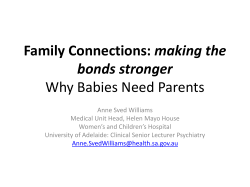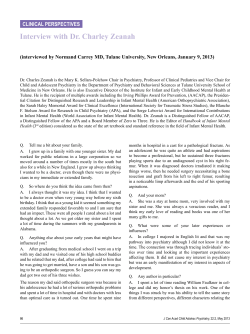
1. Back to sleep 2. Use a firm sleep surface 3. Keep soft objects and loose bedding out of the crib 4. Do not smoke during pregnancy
AAP RECOMMENDATIONS to reduce the risk of SIDS in the general population. 1. Back to sleep 2. Use a firm sleep surface 3. Keep soft objects and loose bedding out of the crib 4. Do not smoke during pregnancy 5. A separate but proximate sleeping environment is recommended: 6. Consider offering a pacifier at nap time and bedtime 7. Avoid overheating 8. Avoid commercial devices marketed to reduce the risk of SIDS 9. Do not use home monitors as a strategy to reduce the risk of SIDS 10. Avoid development of positional plagiocephaly More Detail on the Recommendations: 1. Back to sleep: Infants should be placed for sleep in a supine position for every sleep. Side sleeping is not advised. 2. Use a firm sleep surface: Soft materials or objects such as pillows, quilts, comforters, or sheepskins should not be placed under a sleeping infant. A firm crib mattress, covered by a sheet, is the recommended sleeping surface. 3. Keep soft objects and loose bedding out of the crib: Soft objects such as pillows, quilts, comforters, sheepskins, stuffed toys, and other soft objects should be kept out of an infant’s sleeping environment. If bumper pads are used in cribs, they should be thin, firm, well secured, and not “pillow‐like.” In addition, loose bedding such as blankets and sheets may be hazardous. If blankets are to be used, they should be tucked in around the crib mattress so that the infant’s face is less likely to become covered by bedding. One strategy is to make up the bedding so that the infant’s feet are able to reach the foot of the crib (feet to foot), with the blankets tucked in around the crib mattress and reaching only to the level of the infant’s chest. Another strategy is to use sleep clothing with no other covering over the infant or infant sleep sacks that are designed to keep the infant warm without the possible hazard of head covering. 4. Do not smoke during pregnancy: Maternal smoking during pregnancy has emerged as a major risk factor in almost every epidemiologic study of SIDS. Smoke in the infant’s environment after birth has emerged as a separate risk factor in a few studies, although separating this variable from maternal smoking before birth is problematic. Avoiding an infant’s exposure to second‐hand smoke is advisable for numerous reasons in addition to SIDS risk. 5. A separate but proximate sleeping environment is recommended: The risk of SIDS has been shown to be reduced when the infant sleeps in the same room as the mother. A crib, bassinet, or cradle that conforms to the safety standards of the Consumer Product Safety Commission and ASTM (formerly the American Society for Testing and Materials) is recommended. “Cosleepers” (infant beds that attach to the mother’s bed) provide easy access for the mother to the infant, especially for breastfeeding, but safety standards for these devices have not yet been established by the Consumer Product Safety Commission. Although bed‐ sharing rates are increasing in the United States for a number of reasons, including facilitation of breastfeeding, the taskforce concludes that the evidence is growing that bed sharing, as practiced in the United States and other Western countries, is more hazardous than the infant sleeping on a separate sleep surface and, therefore, recommends that infants not bed share during sleep. Infants may be brought into bed for nursing or comforting but should be returned to their own crib or bassinet when the parent is ready to return to sleep. The infant should not be brought into bed when the parent is excessively tired or using medications or substances that could impair his or her alertness. The task force recommends that the infant’s crib or bassinet be placed in the parents’ bedroom, which, when placed close to their bed, will allow for more convenient breastfeeding and contact. Infants should not bed share with other children. Because it is very dangerous to sleep with an infant on a couch or armchair, no one should sleep with an infant on these surfaces. 6. Consider offering a pacifier at nap time and bedtime: Although the mechanism is not known, the reduced risk of SIDS associated with pacifier use during sleep is compelling, and the evidence that pacifier use inhibits breastfeeding or causes later dental complications is not. Until evidence dictates otherwise, the task force recommends use of a pacifier throughout the first year of life according to the following procedures: • The pacifier should be used when placing the infant down for sleep and not be reinserted once the infant falls asleep. If the infant refuses the pacifier, he or she should not be forced to take it. • Pacifiers should not be coated in any sweet solution. • Pacifiers should be cleaned often and replaced regularly. • For breastfed infants, delay pacifier introduction until 1 month of age to ensure that breastfeeding is firmly established. 7. Avoid overheating: The infant should be lightly clothed for sleep, and the bedroom temperature should be kept comfortable for a lightly clothed adult. Overbundling should be avoided, and the infant should not feel hot to the touch. 8. Avoid commercial devices marketed to reduce the risk of SIDS: Although various devices have been developed to maintain sleep position or to reduce the risk of rebreathing, none have been tested sufficiently to show efficacy or safety. 9. Do not use home monitors as a strategy to reduce the risk of SIDS: Electronic respiratory and cardiac monitors are available to detect cardiorespiratory arrest and may be of value for home monitoring of selected infants who are deemed to have extreme cardiorespiratory instability. However, there is no evidence that use of such home monitors decreases the incidence of SIDS. Furthermore, there is no evidence that infants at increased risk of SIDS can be identified by inhospital respiratory or cardiac monitoring. 10. Avoid development of positional plagiocephaly: • Encourage “tummy time” when the infant is awake and observed. This will also enhance motor development. • Avoid having the infant spend excessive time in car‐seat carriers and “bouncers,” in which pressure is applied to the occiput. Upright “cuddle time” should be encouraged. • Alter the supine head position during sleep.Techniques for accomplishing this include placing the infant to sleep with the head to one side for a week and then changing to the other and periodically changing the orientation of the infant to outside activity (eg, the door of the room). • Particular care should be taken to implement the aforementioned recommendations for infants with neurologic injury or suspected developmental delay. • Consideration should be given to early referral of infants with plagiocephaly when it is evident that conservative measures have been ineffective. In some cases, orthotic devices may help avoid the need for surgery. 11. Continue the Back to Sleep campaign: Public education should be intensified for secondary care‐givers (child care providers, grandparents, foster parents, and babysitters). The campaign should continue to have a special focus on the black and American Indian/Alaska Native populations. Health care professionals in intensive care nurseries, as well as those in well‐infant nurseries, should implement these recommendations well before an anticipated discharge. Task Force on Sudden Infant Death Syndrome, 2005–2006 John Kattwinkel, MD, Chairperson Fern R. Hauck, MD, MS Maurice E. Keenan, MD Michael Malloy, MD, MS Rachel Y. Moon, MD Consultant Marian Willinger, PhD Staff James Couto
© Copyright 2025





















